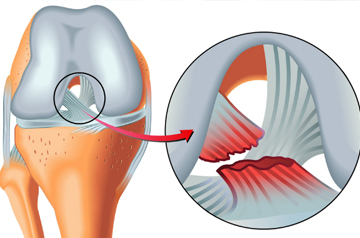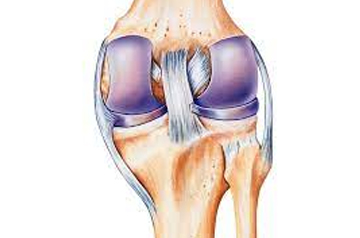Knee Ligament Repair Treatment in Sikar
Tears of the knee ligament are frequent, which may occur during movements like twisting, sudden change of direction, or when the knee gets a direct blow. It may occur to anyone, but it often happens in sports-related activities. In this, one or more knee ligaments get stretched, partially damaged, or even fully damaged at times. Based on the extent of the injury, it is necessary to have proper rest, and in extreme cases, it is necessary to diagnose and perform surgical procedures and treatments.
Sports Med offers world-class and quality knee ligament repair treatment in Sikar. Our skilled surgeon, Dr. Vikram Sharma, and his skilled team offer superior quality treatment with latest technology and necessary medical care.


Types Of Knee Ligament Repair
Ligaments are tough fibrous bands of connective tissue. There are mainly four Knee Ligament Repair Treatments :
- 1. ACL (Anterior Cruciate Ligament) : It is very frequent, particularly during sports activity. It is treated by repairing torn ACL, with the aid of a graft, and with the assistance of small cuts.
- 2. PCL (Posterior Cruciate Ligament) : It is relatively uncommon but serious in nature. This condition involves a complete ligament rupture that is unlikely to heal naturally. Treatment typically involves reconstructing ligaments using minimal invasive surgery.
- 3. MCL (Medial Collateral Ligament) : Damage to the MCL commonly occurs in any sports activity or there is a direct blow to the knee. It is not severe and will normally heal by itself, but in some rare and severe situations, surgery will be needed.
- 4. LCL (Lateral Collateral Ligament) : LCL tear occurs in situations of extreme twisting or direct impact on the knee. Here, the ruptured ligament is sewed back together with a graft, and adequate rest is recommended until it gets healed.
When Knee Ligament Repair is indicated?
Knee ligament repair is needed in the event of a torn ligament that is healthy enough to be sewn back together, something more frequently with some MCL or PCL tears. It's usually done soon after injury, especially in younger patients or in instances where the ligament has been pulled off the bone. Repair can also be attempted if the tear is in a well-vascularized region, so there is a higher chance of healing. Unlike reconstruction, where the ligament is replaced with a new one, repair attempts to preserve the body's natural tissue and restore the joint's stability.
To avoid injury from getting worse and get long-term relief, we provide comprehensive treatment for an effective and personalized knee ligament repair in Sikar.
Why choose an advanced Knee Ligament Repair in Sikar by Dr. Vikram Sharma?
Dr. Vikram Sharma is one of the leading specialists when it comes to knee ligament repair treatment in Sikar. His accuracy, experience, and sympathetic care assisted in the treatment of different patients with severe and complex injuries.Dr. Sharma is one of the most renowned orthopedic surgeons, particularly in knee ligament repair treatment in Sikar. He has performed numerous complicated surgeries in India and also has international exposure to knee ligament repair treatment. For professional advice and high-quality medical care, come to us at SportsMed, the top place for cost-effective and superior knee ligament repair in Sikar.
Book your appointment now for a cost-effective Knee Ligament Repair Treatment in Sikar.
Make your appointment today for exceptional and affordable Knee Ligament Repair Treatment at SportsMed. Our specialists use cutting-edge, minimally invasive methods to restore stability and return you to the activities you enjoy—confidently and safely. Schedule today and begin along the road to a stronger, pain-free knee.
